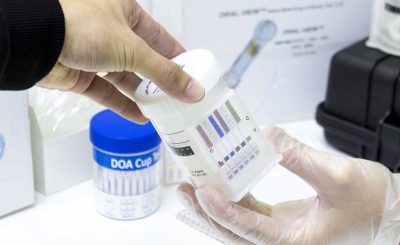You’ve probably heard the term appendicitis. It is a painful and potentially life-threatening condition that affects the appendix, or small sac at the end of the large intestine. The symptoms include severe abdominal pain in your lower right abdomen, sometimes radiating to the upper right quadrant (around the shoulder), but not always.
If you have appendicitis, it must be treated quickly because if left untreated, it can rupture and cause internal bleeding inside your digestive tract. This would require emergency surgery that could lead to death. So, what are the common forms of treatment for appendicitis?
Acute Appendicitis
The most common form of appendicitis is acute appendicitis. Acute appendicitis occurs when infection spreads from the appendix into adjacent tissues. In this case, the appendix becomes inflamed, swollen, and infected with toxins. As a result, the appendix begins to swell and may become so painful that you cannot lie down comfortably without experiencing excruciating pain. If an abscess develops around the inflamed appendix, the condition is called peritonitis.
Acute appendicitis can also occur in children between ages 9 and 13 years old. It is less common in adults than in children, and most often occurs among those who are overweight or obese.
Symptoms of acute appendicitis include severe, sharp, continuous, constant, or burning abdominal pain that is localized to the lower right abdomen and usually radiates to the right side of the chest. Your stomach will feel bloated, as well. You might feel nauseated or vomit, and fever and chills might accompany the pain. Sometimes, the pain is accompanied by nausea, vomiting, constipation, diarrhea, and/or change in bowel habits.

In some cases, acute appendicitis is associated with other abdominal problems such as diverticulosis (small pouches in your colon that protrude through the intestinal wall) or gallstones. If you have these conditions, they should be evaluated along with your appendicitis.
Diagnosis
A diagnosis of acute appendicitis is based on a medical history and physical examination. During the exam, the doctor checks for tenderness over the appendix area, which indicates inflammation.
After examining you, the doctor may perform blood tests and x-rays. A CT scan or ultrasound imaging can help determine whether there are complications, including ruptured appendicitis. Ultrasound imaging uses sound waves instead of x-rays and does not expose you to radiation. However, ultrasound imaging is more expensive than typical x-ray testing.
Treatment
Treatment options depend on several factors, including your age, overall health, severity of illness, and availability of resources.
When acute appendicitis occurs in children, antibiotics alone may be sufficient to treat the condition. If the pain persists, however, you may need to undergo laparoscopic surgery.
Laparoscopic surgery involves inserting a thin tube (called a scope) into any of the following areas:
Lower abdomen
Upper abdomen (including the liver)
Small pelvis
During laparoscopic surgery, the surgeon inserts one or two tiny cameras up into the abdomen through incisions made near the navel. Using the images provided by the camera, the surgeon performs the procedure using instruments inserted via tubes inserted through incisions made in other parts of the body. For example, a tube inserted through the patient’s mouth allows the surgeon to insert a tool used to remove the inflamed appendix.
For many people, an antibiotic drug called cephalexin (Cephaloglycin) is given in addition to antibiotics. Cephalexin is effective against bacteria that may be present in the appendix.
Other treatments for acute appendicitis include intravenous fluids, anti-inflammatory medications, and analgesics. Anti-inflammatory medications such as ibuprofen help relieve swelling and block the production of prostaglandins, chemicals that increase the size of nearby blood vessels and can worsen pain.

Analgesics, such as aspirin, acetaminophen, or naproxen, help lessen the pain and discomfort caused by acute appendicitis. These drugs are nonsteroidal anti-inflammatory drugs (NSAIDs). NSAIDs work by blocking the action of substances in the body that produce pain and inflammation.
Aspirin, like other NSAIDs, has been shown to reduce the risk of appendicitis recurrence and prevent complications related to appendectomy. However, aspirin should not be taken by patients who are allergic to aspirin or have high sensitivity to it.
Surgery is generally reserved for patients who do not respond to conservative treatment. Surgery is also recommended for those who experience recurrent episodes of appendicitis or develop complications due to appendicitis.
Recurrent Appendicitis
While many people recover completely after their initial episode of appendicitis, others suffer recurring attacks. These attacks are known as recurrent appendicitis. Recurrent appendicitis occurs in approximately 5 percent of all individuals who have had appendicitis. It is more common in older patients, particularly women aged 60 or older.
The symptoms of recurrent appendicitis resemble those of acute appendicitis, but the pain tends to be milder and less frequent.
Treatment for recurrent appendicitis includes the same therapies as described above, plus additional measures. One approach is to use an oral antibiotic, such as penicillin or amoxicillin, for a week or longer after each attack of appendicitis.
Another approach is to make lifestyle changes, such as eating a diet low in fat, losing weight, and stopping smoking. Smoking is associated with increased risk for recurrent appendicitis. Avoiding alcohol consumption and avoiding strenuous exercise can also help prevent recurrent attacks.
After reading all this you might also be thinking about what are the signs of appendicitis so if you really want to know then there are some common signs of this such as sudden pain in the lower abdomen, loss in appetite, vomiting, pain in throat while coughing. All of these are the common signs of this and if you see any of them then you have to consult with a doctor.






